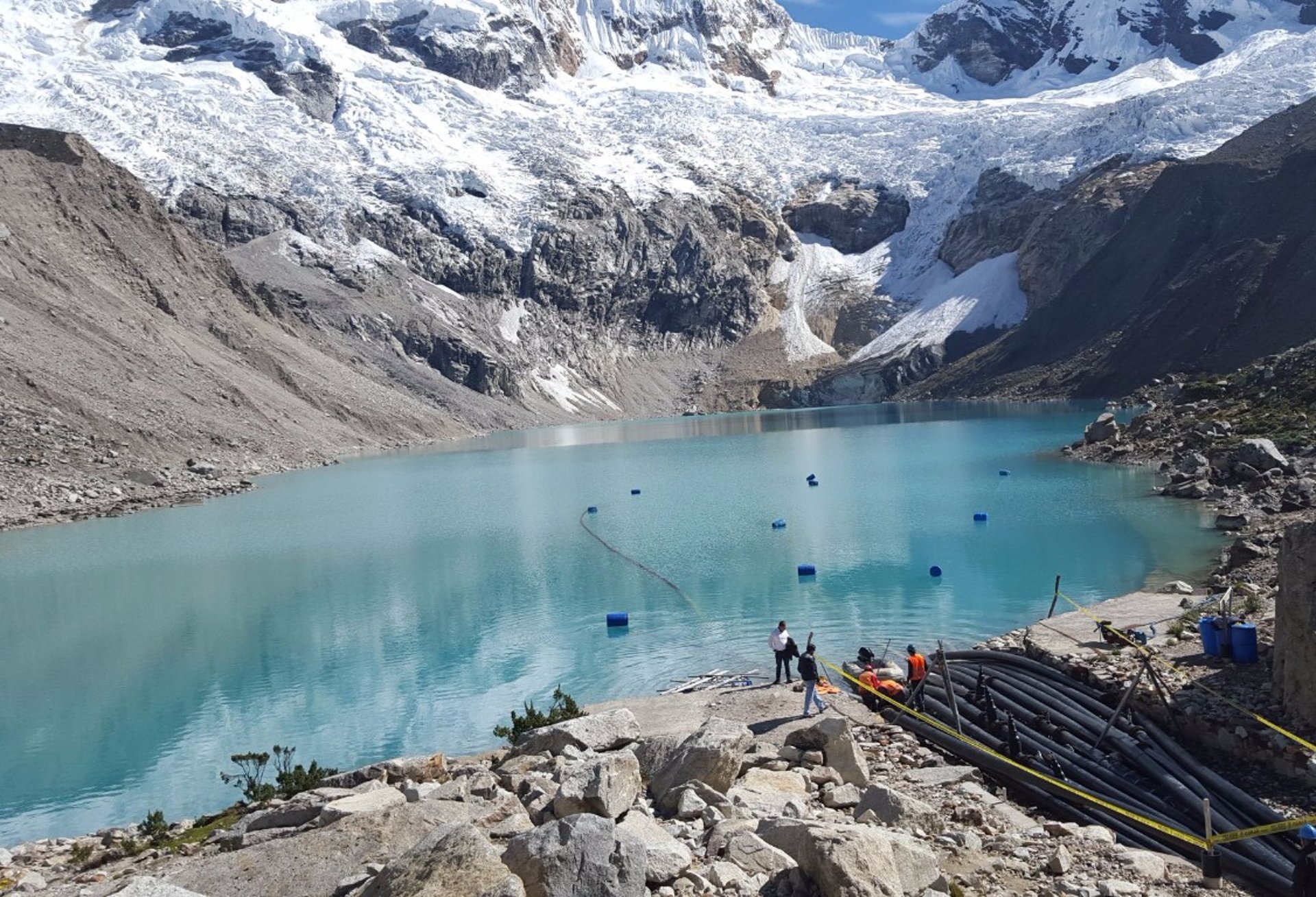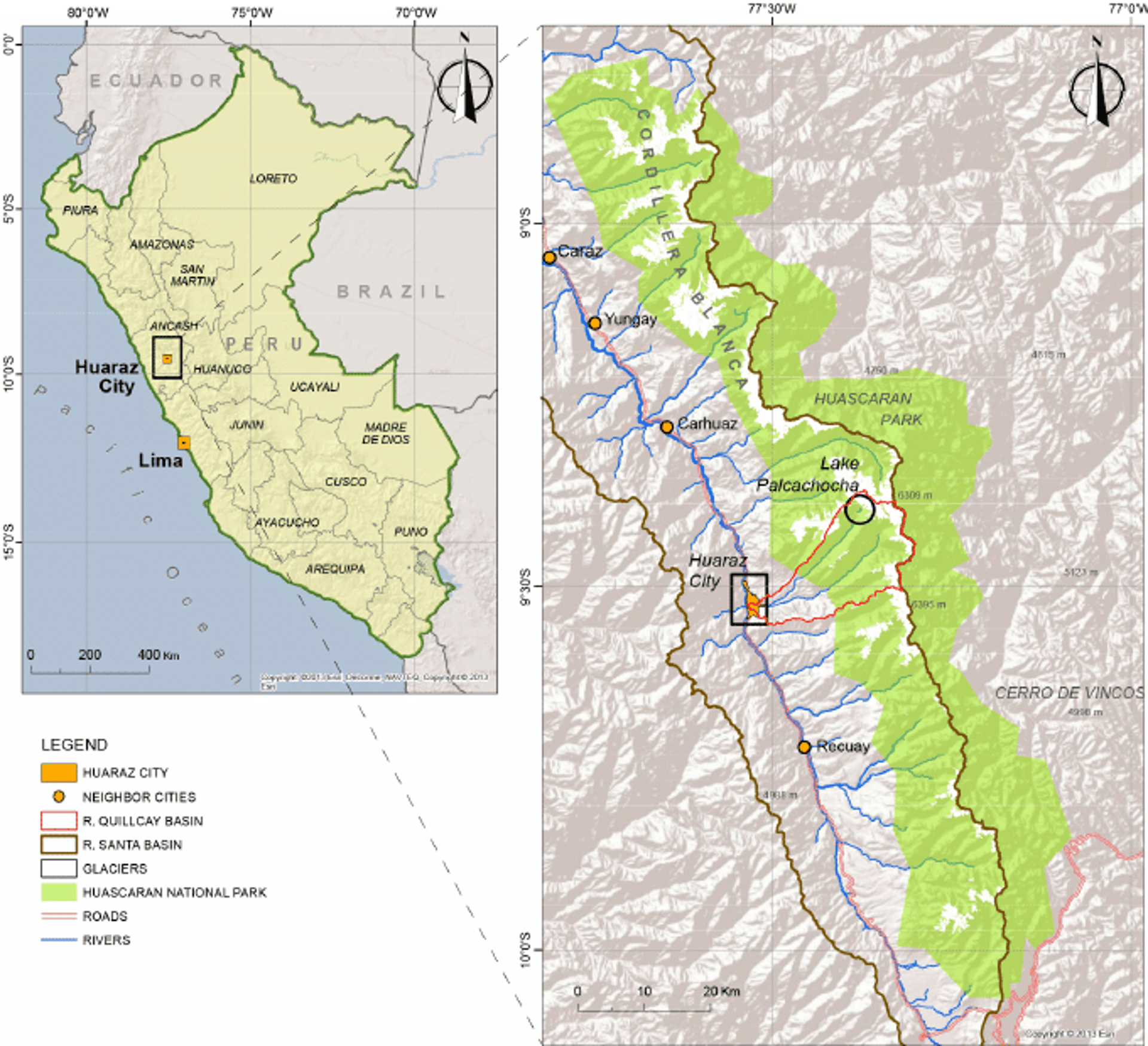Glacial Lake Outburst Flood in Huaraz, Peru (1941)


On 13 December 1941, after an ice avalanche entered the glacial lake Lago Palcacocha in the Cordillera Blanca mountain range in western Peru, a wave swelled up and broke through its moraine (EGU 2016). As a result, surrounding areas experienced a glacier outburst flood (“GLOF”) (“aluvión”) comprising liquid mud conveying boulders and blocks of ice (USGS 1999).
The aluvión took 1,800 lives (Somos-Valenzuela et al 2016 citing Wegner 2014), flooding a third of Huaraz city including its downtown and commercial areas (Huggel et al 2020), and causing immense damage to infrastructure and farmland up to the western coast of Peru (Somos-Valenzuela et al 2016).
The event affected agriculture-dependent communities, including those who engaged in subsistence farming (Frey et al 2018) and downstream communities (Huggel et al 2020).
After efforts by the Government of Peru to drain a number of glacial lakes, there appear to have been no more aluviónes in the range after 1972 (USGS 1999); however, the Lago Palcacocha continues to pose a highly destructive GLOF risk to Huaraz (Somos-Valenzuela et al 2016).
Glacier changes, caused by the increased temperatures in the mountain cryosphere, contribute to GLOFs (Huggel et al 2020). It is possible that global average temperatures began to rise more steeply after World War I (1914-1918), with the hike in production of consumer goods in peacetime leading to increased combustion of fossil fuels (WEF 2021), is correlated to a period of sharp and pronounced deglaciation in the Palcacocha region from the 1930s to 1940s (Huggel et al 2020).
Considering long-term glacier changes in the Palcacocha area, the period of pronounced deglaciation in the 1930s and 1940s during which this event took place cannot be explained solely by variations in the El Niño-Southern Oscillation climate pattern, and climate change must have played a crucial role (Huggel et al 2020). Finally, Stuart-Smith et al (2021) found “strong evidence of anthropogenic influence” on this event.
References:
European Geosciences Union (‘EGU’). (2016). ‘Image of the Week – Yes, you’re looking at one of Peru’s most dangerous glacial lakes!’ David Rounce. 9 September 2016. https://blogs.egu.eu/divisions/cr/2016/09/09/image-of-the-week-yes-youre-looking-at-one-of-perus-most-dangerous-glacial-lakes/
U.S. Geological Survey (‘USGS’). (1999). 'Glacier Hazards'. U.S. Department of the Interior. 9 February 1999. https://pubs.usgs.gov/pp/p1386i/peru/hazards.html
Somos-Valenzuela, M. A., Chisolm, R. E., Rivas, D. S., Portocarrero, C., and McKinney, D. C. (2016). ‘Modeling a glacial lake outburst flood process chain: the case of Lake Palcacocha and Huaraz, Peru’. Hydrol. Earth Syst. Sci., 20, 2519–2543, https://doi.org/10.5194/hess-20-2519-2016
Huggel, C., M. Carey, A. Emmer, H. Frey, N. Walker-Crawford, I. Wallimann-Helmer. (2020). ‘Anthropogenic climate change and glacier lake outburst flood risk: local and global drivers and responsibilities for the case of Lake Palcacocha, Peru’. Natural Hazards and Earth System Sciences 20(8):2175-2193. DOI:10.5194/nhess-20-2175-2020
Frey, H., C. Huggel, R.E. Chisholm, P. Baer, B. McArdell, A. Cochachin, and C. Portocarrero. (2018). ‘Multi-Source Glacial Lake Outburst Flood Hazard Assessment and Mapping for Huaraz, Cordillera Blanca, Peru’. Front. Earth Sci., 21 November 2018. Sec. Geohazards and Georisks. https://doi.org/10.3389/feart.2018.00210
World Economic Forum (WEF). (2021). ‘Since 1850, these historical events have accelerated climate change'. 9 February 2021’. https://www.weforum.org/agenda/2021/02/global-warming-climate-change-historical-human-development-industrial-revolution/
Stuart-Smith, R.F., G. H. Roe, S. Li, and M. R. Allen. (2021). 'Increased outburst flood hazard from Lake Palcacocha due to human-induced glacier retreat'. 14 Nature Geoscience 85–90. doi:10.1038/s41561-021-00686-4 / https://rdcu.be/ceLUg
Image (lake): Glacier Hub. https://news.climate.columbia.edu/features/glacierhub/
Image (map): Research Gate. https://www.researchgate.net/figure/Lake-Palcacocha-location-upstream-from-Huaraz-city-in-the-Cordillera-Blanca-in-Peru_fig1_278404694